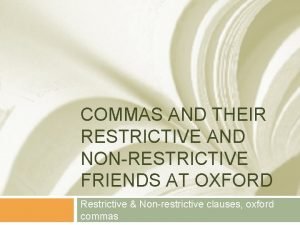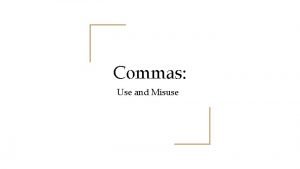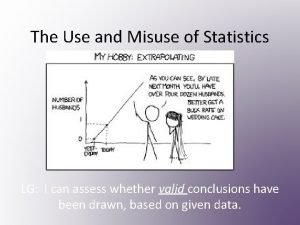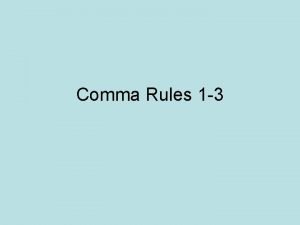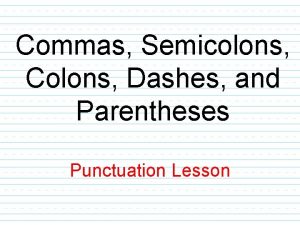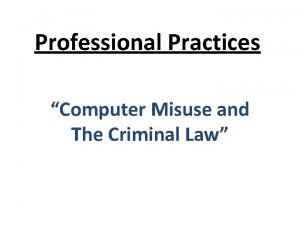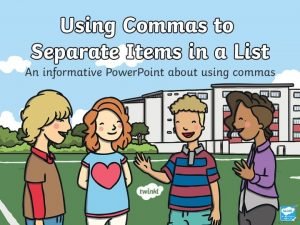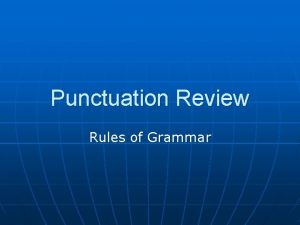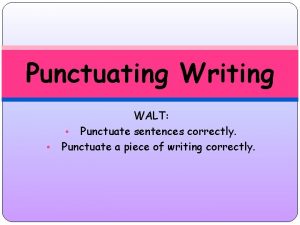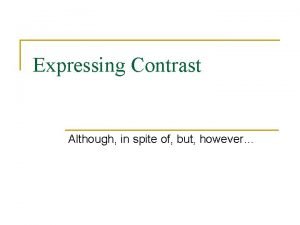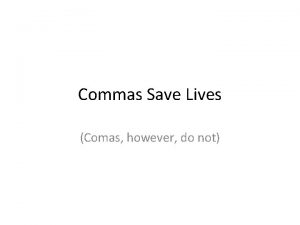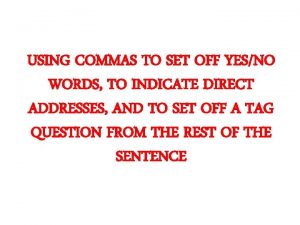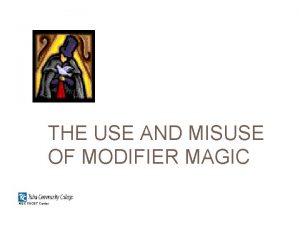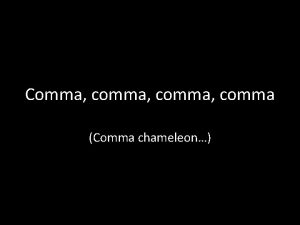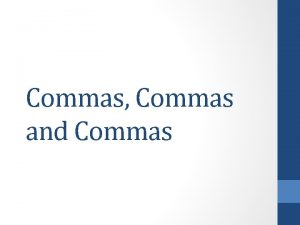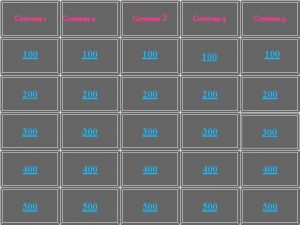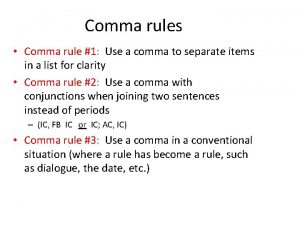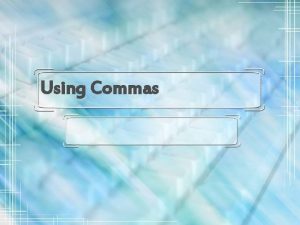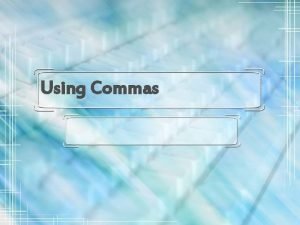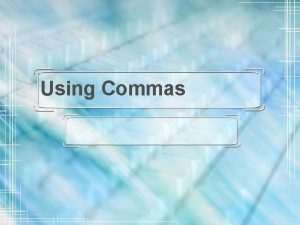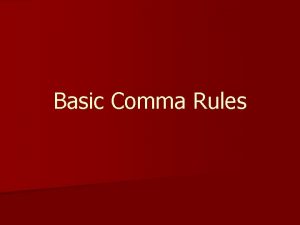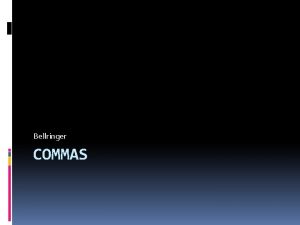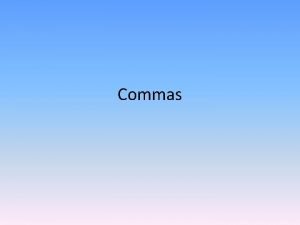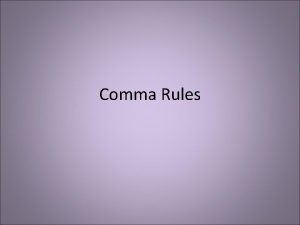Commas Use and Misuse Comma Use 1 Commas














- Slides: 14

Commas: Use and Misuse

Comma Use

1) Commas should separate independent clauses when preceded by one of these seven coordinating conjunctions: for, and, nor, but, or, yet, so. Example: She hasn’t done her homework, but she is planning on it.

2) Commas go after introductory clauses, phrases, or words from before the main clause. Example: Because he was tired from work, he fell asleep early. To be sure, it was an exhausting day. Unfortunatley, he was too tired to work.

3) Pairs of commas are used in the middle of a sentence to separate clauses, phrases, and words that are unnecessary to the meaning of the sentence. Example: The only day I have off from work this week, Sunday, happens to be my mother’s birthday.

4) Commas separate three or more words, phrases, or clauses written in a series. Example: He bought popcorn, candy, and soda at the movie theatre.

5) Commas separate two or more coordinate adjectives that describe the same noun. Example: He is a tall, old man.

6) Commas are used at the end of sentences to separate contrasted coordinate elements or to indicate a pause. Example: It’s your birthday, right?

7) Use a comma to shift between the main discourse and a quotation. Example: Harry flew into the air and said, “Give it here, Malfoy. ”

Comma Misuse

1) Separating a verb from its subject. Example: Incorrect- The most important thing a friend can do, is support you. Correct- The most important thing a friend can do is support you.

2) Using a comma before “that. ” Example: Incorrect- Her dress was a similar color, that her sister wore last year. Correct- Her dress was a similar color to the one her sister wore last year.

3) Separating verbs Example: Incorrect- He ran for an hour and, lifted weights for another. Correct- He ran for an hour and lifted weights for another.

4) Comma splices (using a comma to connect two independent clauses without a coordinating conjunction) Example: Incorrect- I cannot wait for summer, it is going to be so fun. Correct- I cannot wait for summer; it is going to be so fun. I cannot wait for summer, because it is going to be so fun. I cannot wait for summer. It is going to be so fun.
 Comma comma comma chameleon meme
Comma comma comma chameleon meme Misuse of commas
Misuse of commas Use and misuse of statistics
Use and misuse of statistics Comma after such as
Comma after such as Interrupting comma examples
Interrupting comma examples How to prevent computer misuse
How to prevent computer misuse Scpmpaware
Scpmpaware Do you put a comma before and in a list
Do you put a comma before and in a list When to use a comma before and
When to use a comma before and Punctuate the sentences
Punctuate the sentences How to use commas correctly
How to use commas correctly In contrast comma
In contrast comma Commas in a series example
Commas in a series example Rest make sentence
Rest make sentence Misuse of modifiers
Misuse of modifiers
